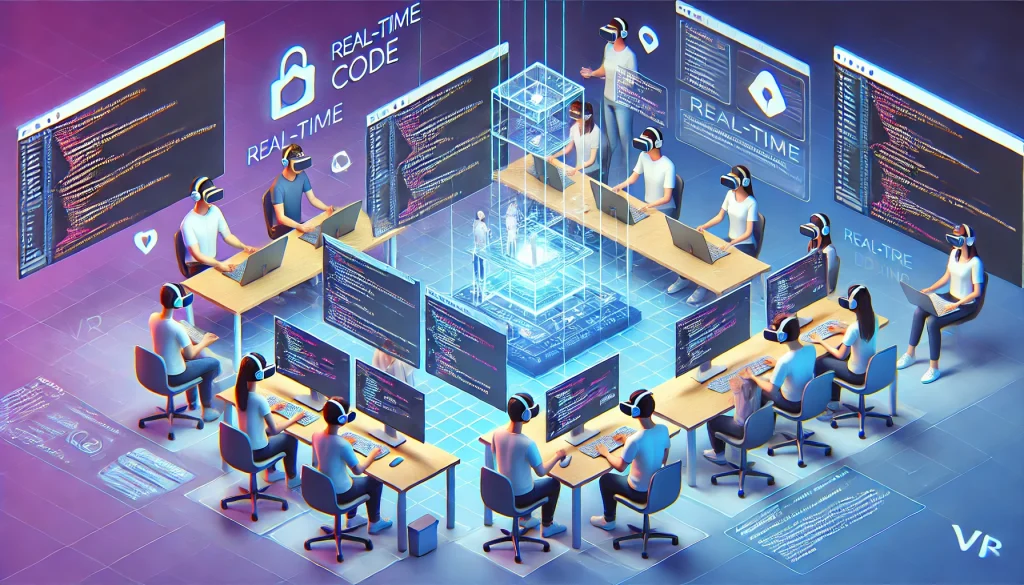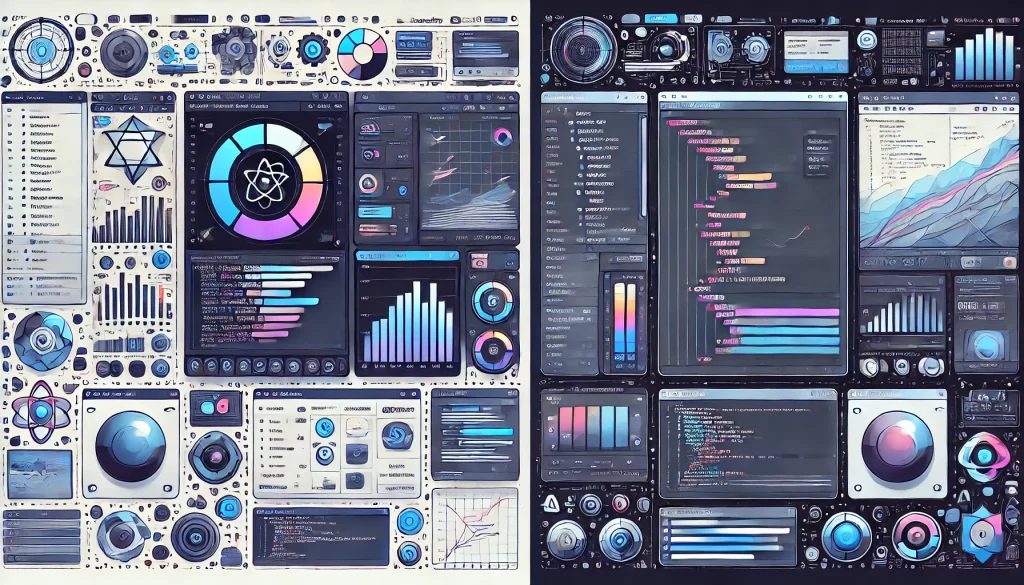Developers want faster and smarter code editing experiences in 2025. From advanced AI-based suggestions to AR/VR-assisted collaboration, the competition among integrated development environments (IDEs) and editors has never been hotter. Below is our list of 10 standouts shaping the landscape, whether you’re writing Python scripts or building multi-service enterprise apps.

1. Visual Studio Code
Why It Stands Out
- AI Extensions: Native integration with GitHub Copilot and other AI coding assistants.
- Massive Ecosystem: An unrivaled marketplace for extensions—linting, debugging, Docker integration, themes, and more.
- Multi-Language Mastery: From JavaScript to Rust, VS Code provides language servers for nearly every technology.
Notable 2025 Update: The new “Cloud Sync” feature that seamlessly migrates all custom settings and keybindings across machines. Combined with improved “AI Chat” panel, it can debug code in real time by referencing your entire project context.
2. IntelliJ IDEA (JetBrains Suite)
Why It Stands Out
- Deep Language Support: Known for best-in-class Java capabilities, plus robust plugins for Kotlin, Scala, and more.
- Refined AI-Assisted Refactoring: The 2025 edition includes “Smart AI Hints,” which watch your coding patterns and propose reorganizations, potential bug fixes, or simpler APIs.
- Integrated Tools: Built-in Git, Docker, and database clients make it a one-stop solution for complex enterprise projects.
Notable 2025 Update: A new “Intelli Sync” feature that merges local code style preferences with team guidelines, ensuring a consistent style across large organizations—particularly beneficial for monorepos.
3. JetBrains Fleet
Why It Stands Out
- Lightweight Meets Full-Power: JetBrains’ modern editor aims to deliver the fluidity of a text editor plus the deep intelligence of IntelliJ-based IDEs.
- Collaborative Coding: Real-time pair programming via built-in collaboration mode.
- Minimal Resource Footprint: Start as a quick code editor, “upgrade” on the fly for advanced refactoring or debugging.
Notable 2025 Update: Fleet’s evolving remote workspace sync ties into JetBrains Projector, letting devs access a powerful server-based IDE from minimal local resources—handy for intense tasks like large-scale code navigation or AI-based code suggestions.
4. Sublime Text 5
Why It Stands Out
- Speed & Simplicity: Sublime remains the champion of lightning-fast startup times, near-instant search, and minimal overhead.
- Powerful Multi-Selection: A hallmark for quick text transformations or repeated code patterns.
- Plugin Ecosystem: While smaller than VS Code’s marketplace, its curated plugins (Package Control) remain robust for theming, linting, and more.
Notable 2025 Update: Enhanced “AI Snippet Completion” that’s more integrated than previous third-party attempts, letting devs test out partial auto-completions without a separate extension manager.
5. Visual Studio (2025 Edition)

Why It Stands Out
- Enterprise Focus: The go-to IDE for C# and .NET, loaded with advanced debugging, profiling, and project management.
- AR Collaboration Mode: The new XR add-on teased in 2024 now allows devs to step into a mixed reality debugging session, providing 3D visualizations of data structures or architecture.
- Deep Integration with Azure: One-click deployment pipelines to Azure, plus AI-based environment suggestions.
Notable 2025 Update: “Vision Debugger,” a feature that can parse code’s flow in 3D, highlighting concurrency or dependency graphs for complex projects.
6. Neovim + AI Plugins
Why It Stands Out
- Keyboard-Centric: For Vim-lovers, Neovim offers a modern, extensible take on the classic modal editing approach.
- AI Add-Ons: 2025’s plugin ecosystem includes LSP-based code completions plus advanced ChatGPT-based doc generation.
- Lightweight, Scriptable: Perfect for devs who love deep customization, running in minimal environments like remote Linux servers.
Notable 2025 Update: “Neo-Assist,” a community-driven plugin hooking into ChatGPT-based models for inline code suggestions, tested to maintain minimal overhead so you can enjoy fast keystrokes without ballooning memory usage.
7. GitHub Codespaces
Why It Stands Out
- Cloud-Based Dev: Entire dev environment in the browser, so no local setup needed.
- Synced with GitHub: Great for quick collaboration or new hires—no environment nightmares.
- VS Code-Like UI: Familiar interface with remote container or VM approaches for any stack.
Notable 2025 Update: Enhanced GPU-based Codespaces for ML workloads, letting you spin up a container with GPU acceleration for data science or AI tasks in a jiffy.
8. Eclipse Theia
Why It Stands Out
- Open-Source VS Code Alternative: A framework to build custom IDE solutions.
- Multi-Language: The “Monaco” editor from VS Code powers the text editing, ensuring broad language coverage.
- Customizable: For companies or projects wanting a tailor-made IDE with branded workflows.
Notable 2025 Update: The Theia organization introduced “AI-Enhanced Project Explorer,” offering advanced code classification and metadata-based suggestions to accelerate navigation in large monorepos.
9. Zed Editor
Why It Stands Out
- Ultrafast & Collaborative: Zed is a new native editor focusing on speed, minimal friction, and real-time multi-dev editing out of the box.
- Modern Design: Built from scratch for 2025 dev workflows, featuring integrated terminal, code intelligence, and a reimagined UI approach.
- Privacy + Performance: Using an engine that runs locally with minimal overhead, plus optional AI features that keep code suggestions offline.
Notable 2025 Update: “Zed Team Spaces,” an advanced sharing environment that merges pair programming with integrated voice calls and ephemeral code-lab states, bridging Slack-like communication into the code editor itself.
10. CodeCatalyst VR Edition
Why It Stands Out
- AR/VR Experience: A bold experiment bridging immersive tech with coding—designed for VR headsets.
- Spatial Code Layouts: Tackle complex architecture by “walking through” code modules or data flows.
- Niche but Innovative: Early adopters see potential for dev collaboration, especially for architecture planning or debugging multi-service patterns.
Notable 2025 Update: Full integration with Docker environment and collaborative “VR Whiteboard,” letting remote devs concept map and drag code components around in 3D.
Conclusion
In 2025, the IDE and code editor space is more diverse and innovative than ever. While tools like VS Code and IntelliJ IDEA remain favorites for many developers, a wave of next-gen solutions—ranging from Neovim expansions to VR-based prototypes—offers new frontiers in efficiency, collaboration, and immersive experiences. Whether you prioritize advanced AI coding assistance, minimal resource usage, or 3D debugging, there’s an editor or IDE ready to match your workflow.

Key Takeaways:
- AI Integration is pervasive—some editors provide near-instant suggestions or entire function generation.
- Performance & Collaboration drive new entrants, from minimal overhead (Sublime Text, Zed) to real-time multi-dev (Fleet, CodeCatalyst VR).
- Keep Experimenting: The best environment depends on your language, project scale, and personal preference. Don’t hesitate to test out new tools that might boost productivity or spark creativity.
Whether you stick with the mainstream or explore these emerging solutions, 2025’s coding environment shows how the line between editor and advanced AI platform continues to blur—shaping how we write, debug, and share code.














